Abstract
Ninety-nine isolates of Fusarium species were obtained from rotted potato tubers from various parts of Korea. Of these isolates, 80 were identified as Fusarium oxysporum, F. solani, or F. sambucinum. The isolates of these species were grown on autoclaved wheat grains and examined for toxicity in a rat-feeding test. A total of 8 of 57 F. oxysporum isolates, 3 of 14 F. solani isolates, and 5 of 9 F. sambucinum isolates caused the death of the rats. Of the 16 toxic isolates, 1 isolate of F. oxysporum produced a substantial amount of moniliformin, which could account for its toxicity. None of the other 15 isolates produced trichothecenes, moniliformin, fusarochromanone, fumonisin B1, or wortmannin. F. sambucinum PZF-4 produced an unknown toxin in wheat culture. This new toxin, given the trivial name sambutoxin, caused toxic effects in rats, including body weight loss, feed refusal, hemorrhage in the stomach and intestines, and, finally, death when rats were fed diets supplemented with 0.05 and 0.1% sambutoxin. The toxin was also toxic to chicken embryos, and the 50% lethal concentration was 29.6 micrograms per egg. Sambutoxin formed as white crystals that turned purple when combined with reagents such as sulfuric acid and p-anisaldehyde. It exhibited a green color immediately after treatment with potassium ferricyanide-ferric chloride. Its UV spectrum had absorption maxima at 213, 233, and 254 nm, and its infrared spectrum showed an amide group at 1,650 and 1,560 cm-1 and a hydroxy group at 3,185 cm-1. Mass spectrometry showed that the molecular weight of the toxin was 453 and the molecular formula was C28H39NO4.(ABSTRACT TRUNCATED AT 250 WORDS)
Full text
PDF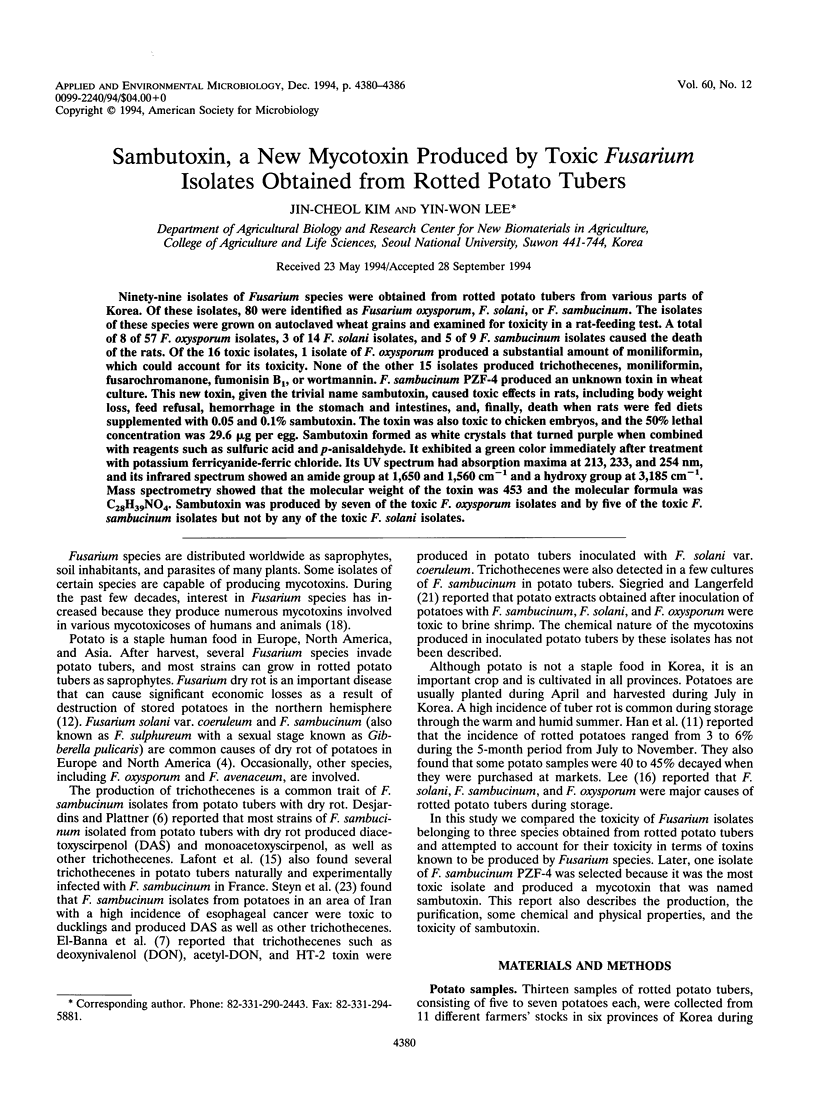
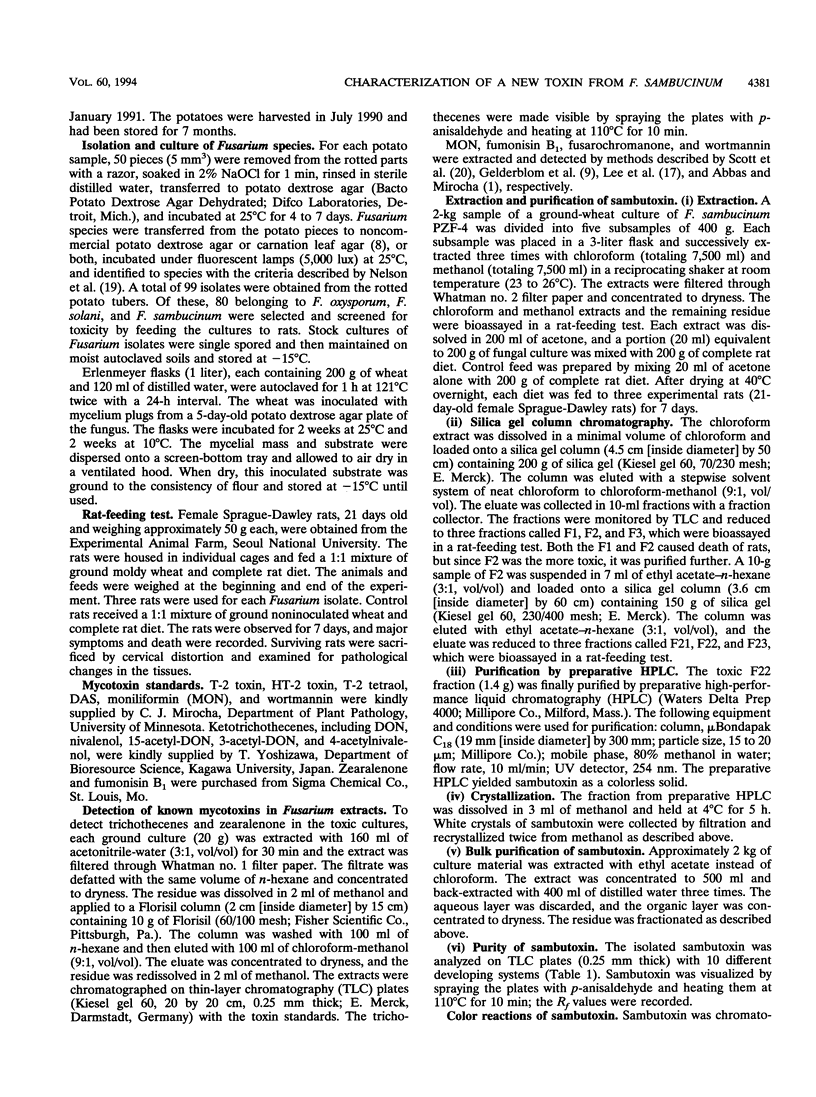
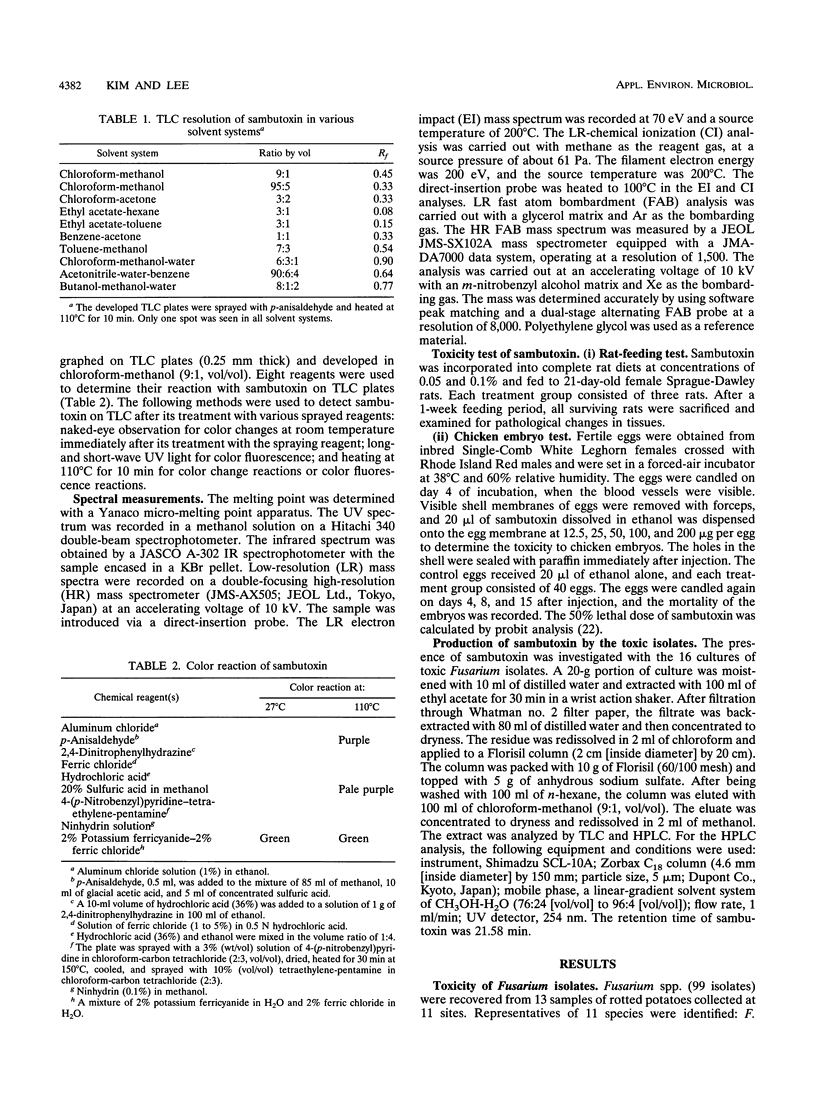
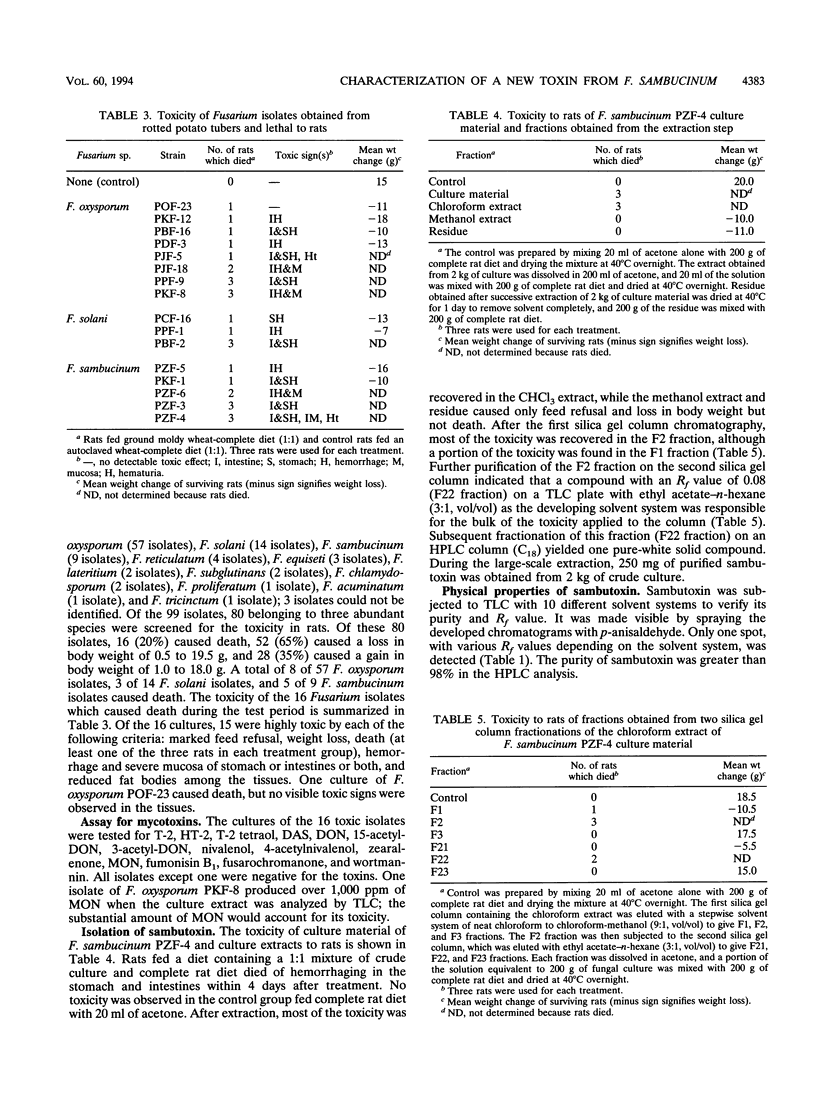
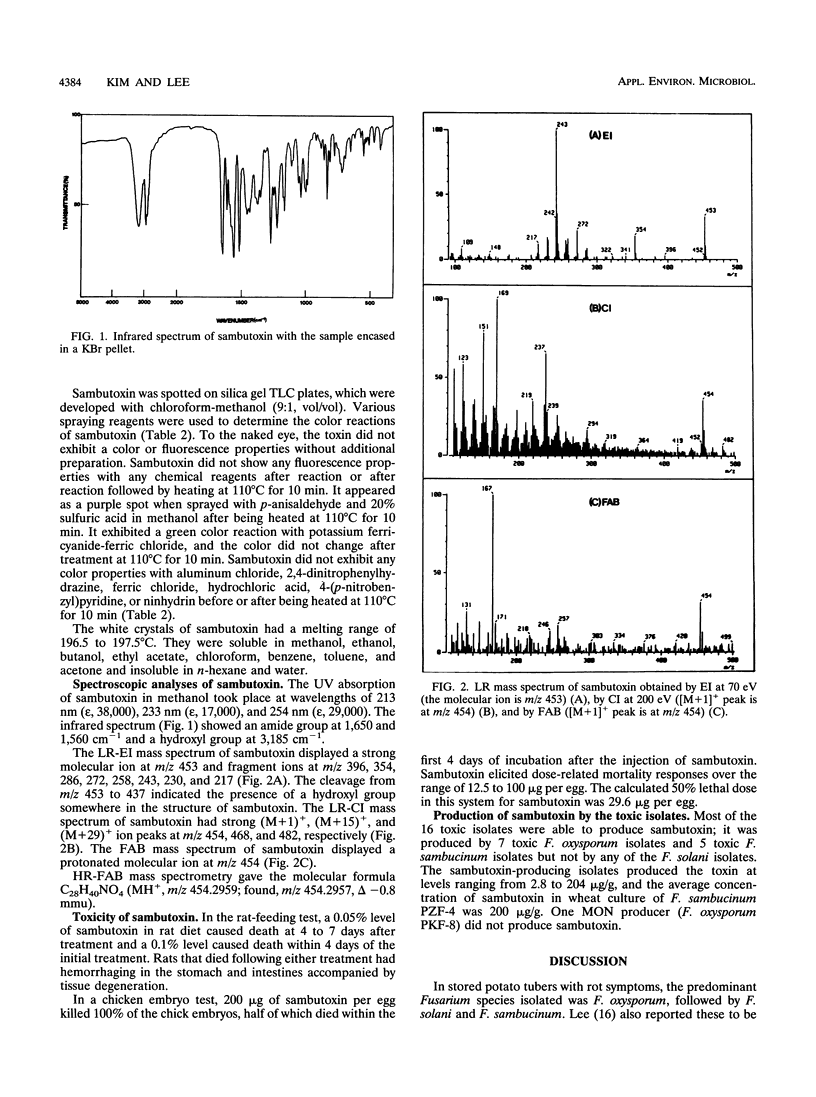
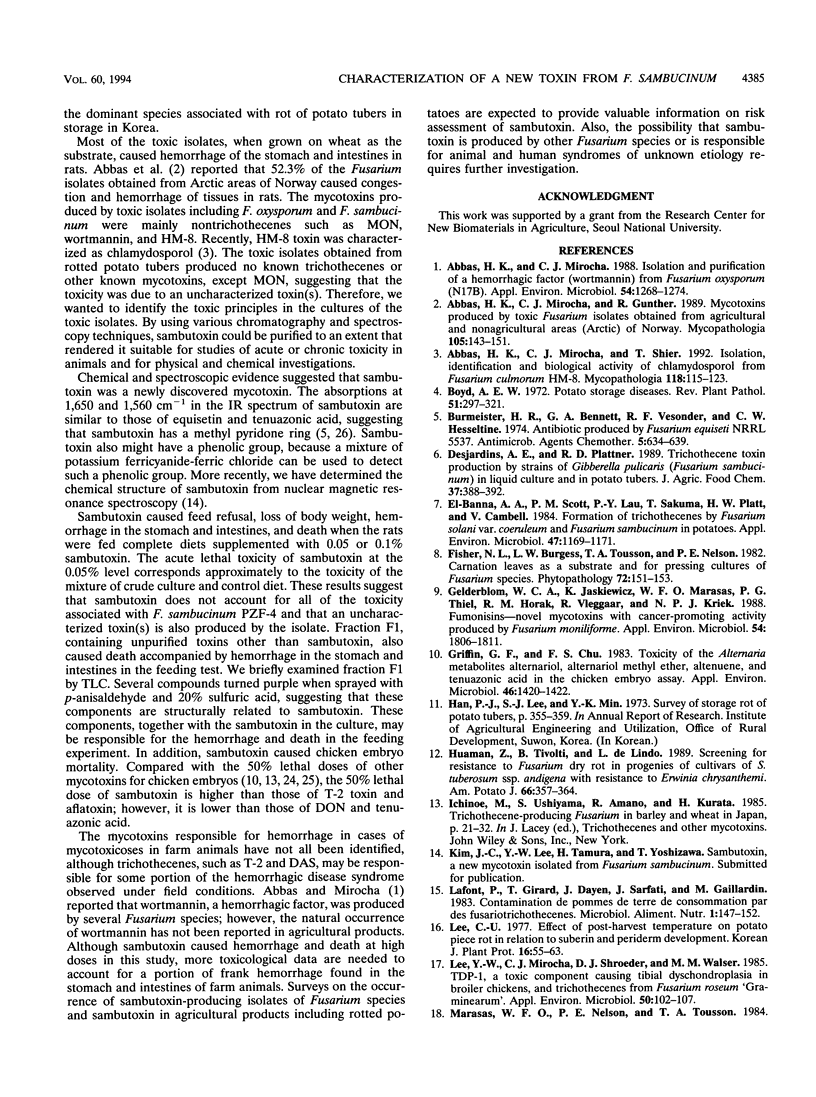
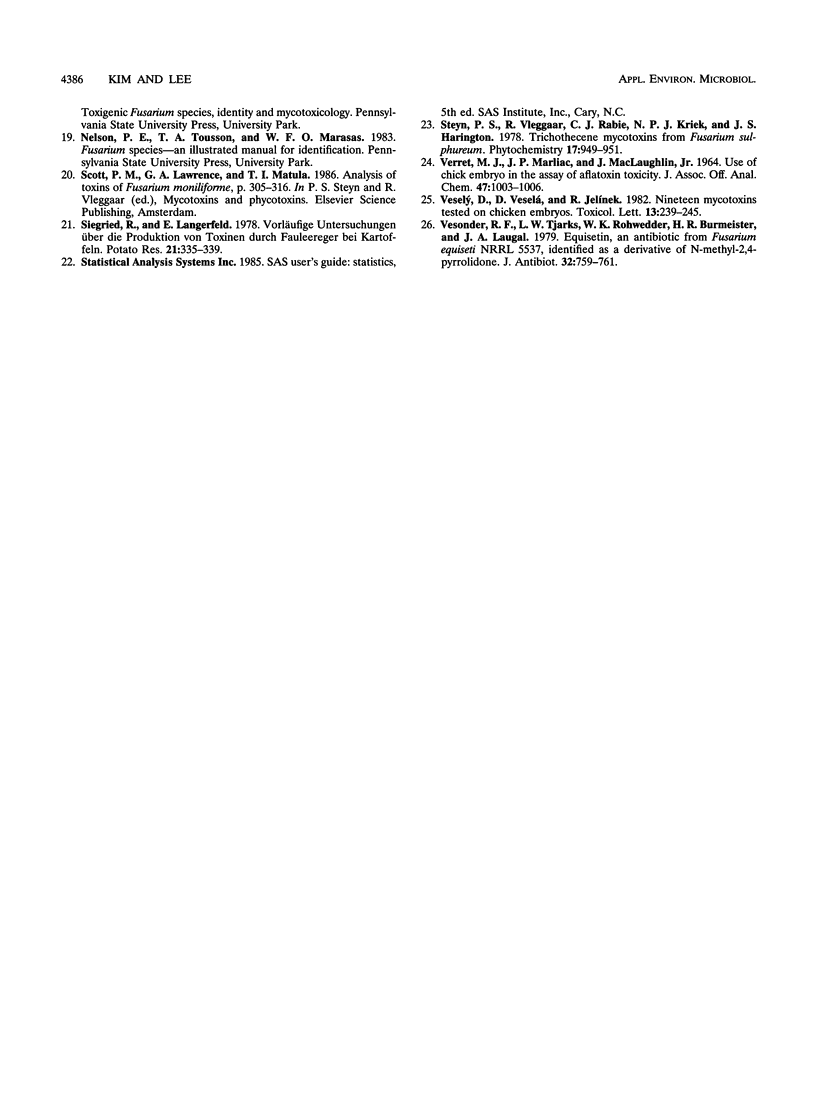
Selected References
These references are in PubMed. This may not be the complete list of references from this article.
- Abbas H. K., Mirocha C. J., Gunther R. Mycotoxins produced by toxic Fusarium isolates obtained from agricultural and nonagricultural areas (Arctic) of Norway. Mycopathologia. 1989 Mar;105(3):143–151. doi: 10.1007/BF00437246. [DOI] [PubMed] [Google Scholar]
- Abbas H. K., Mirocha C. J. Isolation and purification of a hemorrhagic factor (wortmannin) from Fusarium oxysporum (N17B). Appl Environ Microbiol. 1988 May;54(5):1268–1274. doi: 10.1128/aem.54.5.1268-1274.1988. [DOI] [PMC free article] [PubMed] [Google Scholar]
- Abbas H. K., Mirocha C. J., Shier W. T. Isolation, identification and biological activity of chlamydosporol from Fusarium culmorum HM-8. Mycopathologia. 1992 May;118(2):115–123. doi: 10.1007/BF00442540. [DOI] [PubMed] [Google Scholar]
- Burmeister H. R., Bennett G. A., Vesonder R. F., Hesseltine C. W. Antibiotic produced by Fusarium equiseti NRRL 5537. Antimicrob Agents Chemother. 1974 Jun;5(6):634–639. doi: 10.1128/aac.5.6.634. [DOI] [PMC free article] [PubMed] [Google Scholar]
- Gelderblom W. C., Jaskiewicz K., Marasas W. F., Thiel P. G., Horak R. M., Vleggaar R., Kriek N. P. Fumonisins--novel mycotoxins with cancer-promoting activity produced by Fusarium moniliforme. Appl Environ Microbiol. 1988 Jul;54(7):1806–1811. doi: 10.1128/aem.54.7.1806-1811.1988. [DOI] [PMC free article] [PubMed] [Google Scholar]
- Griffin G. F., Chu F. S. Toxicity of the Alternaria metabolites alternariol, alternariol methyl ether, altenuene, and tenuazonic acid in the chicken embryo assay. Appl Environ Microbiol. 1983 Dec;46(6):1420–1422. doi: 10.1128/aem.46.6.1420-1422.1983. [DOI] [PMC free article] [PubMed] [Google Scholar]
- Lee Y. W., Mirocha C. J., Shroeder D. J., Walser M. M. TDP-1, a toxic component causing tibial dyschondroplasia in broiler chickens, and trichothecenes from Fusarium roseum 'Graminearum'. Appl Environ Microbiol. 1985 Jul;50(1):102–107. doi: 10.1128/aem.50.1.102-107.1985. [DOI] [PMC free article] [PubMed] [Google Scholar]
- Veselý D., Veselá D., Jelínek R. Nineteen mycotoxins tested on chicken embryos. Toxicol Lett. 1982 Oct;13(3-4):239–245. doi: 10.1016/0378-4274(82)90218-1. [DOI] [PubMed] [Google Scholar]
- Vesonder R. F., Tjarks L. W., Rohwedder W. K., Burmeister H. R., Laugal J. A. Equisetin, an antibiotic from Fusarium equiseti NRRL 5537, identified as a derivative of N-methyl-2,4-pyrollidone. J Antibiot (Tokyo) 1979 Jul;32(7):759–761. doi: 10.7164/antibiotics.32.759. [DOI] [PubMed] [Google Scholar]
- el-Banna A. A., Scott P. M., Lau P. Y., Sakuma T., Platt H. W., Campbell V. Formation of trichothecenes by Fusarium solani var. coeruleum and Fusarium sambucinum in potatoes. Appl Environ Microbiol. 1984 May;47(5):1169–1171. doi: 10.1128/aem.47.5.1169-1171.1984. [DOI] [PMC free article] [PubMed] [Google Scholar]


